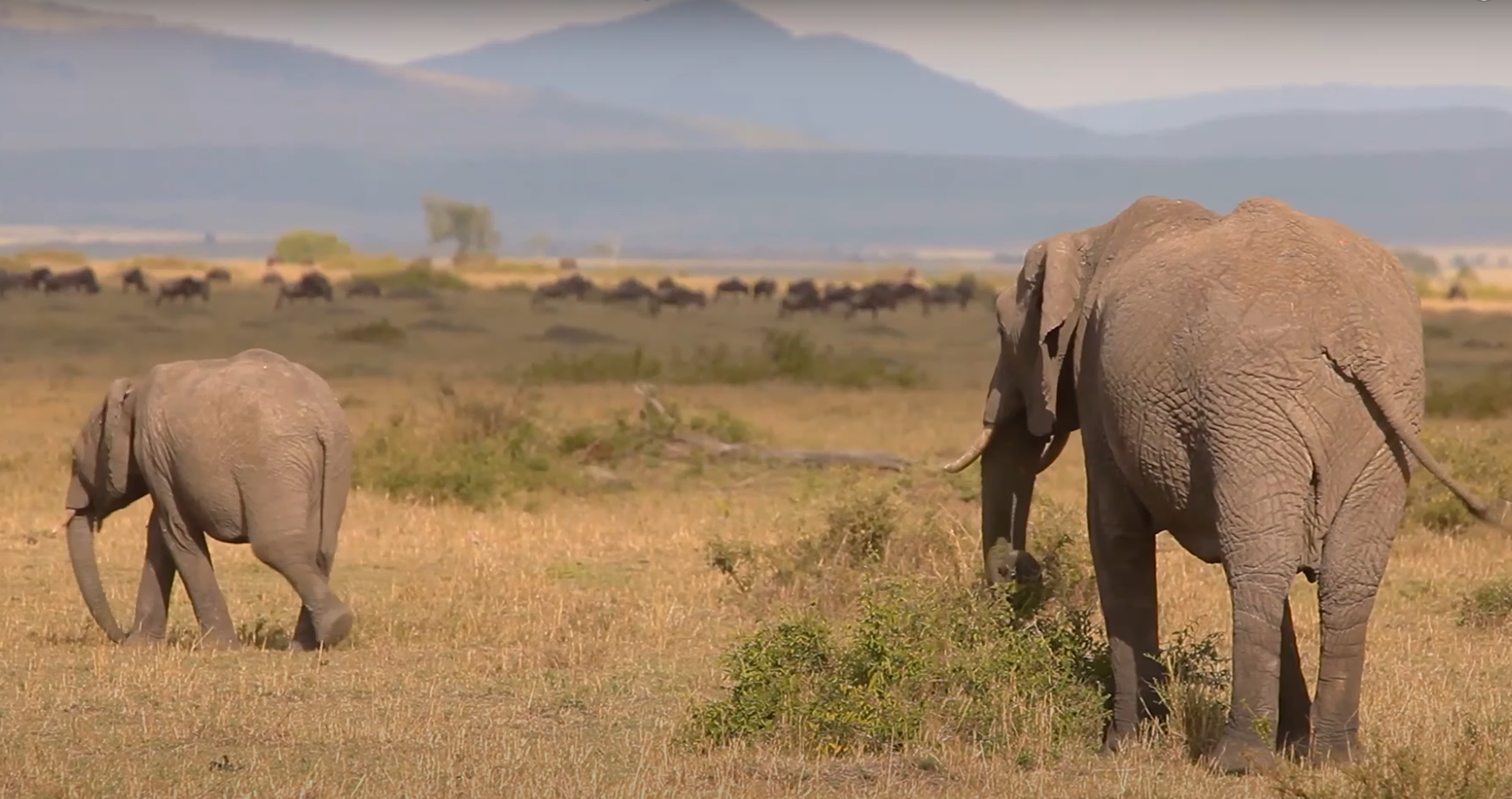Tsavo National Park East & West Safari: Kenya Wildlife Adventures
Embark on a tsavo east and west safari into Kenya’s largest national park—a nearly 22,000 km² wilderness split into two distinct parts. Tsavo National Park, one of the largest in the world, is uniquely divided into Tsavo East and Tsavo West, separated by the historic Mombasa-to-Interior railway.
Overview & Key Features
Tsavo National Park, one of Kenya’s premier and largest national parks, spans nearly 22,000 km² and is divided into two distinct sections—Tsavo East National Park and Tsavo West National Park—separated by a railway line. Managed by Kenya Wildlife Services, these parks offer both classic Big Five encounters and exceptional birding opportunities for an authentic safari adventure.
Tsavo East, one of Kenya’s oldest parks, covers 13,747 km² near the town of Voi in the Taita-Taveta District. It is characterized by vast red-earth plains traversed by the life-giving Galana River, with iconic landmarks such as the expansive Yatta Plateau and dramatic Lugard Falls punctuating its semi-arid landscape. In contrast, Tsavo West, spanning 9,065 km², is renowned for its rugged, volcanic terrain featuring jagged black outcrops, hardened lava flows (including the legendary Shetani Lava Flow, known as “Devil” by locals), and lush acacia woodlands beneath the gaze of Kilimanjaro, along with swamps, Lake Jipe, and the renowned Mzima Springs.
Both sections offer a wide range of accommodation options—often conveniently located near waterholes to enhance game viewing—ensuring that your Tsavo East and West safari is as comfortable as it is unforgettable.

Tsavo West Highlights
Dramatic Landscapes & Iconic Attractions:
- Shetani Lava Flow: This 200-year-old, tar-colored stream of hardened magma creates a striking natural backdrop, steeped in local legend.
- Mzima Springs: An oasis fed by crystal-clear water filtered through the Chyulu Hills, Mzima Springs features a luxuriant groundwater forest of fever trees and palms, where hippos, crocodiles, and playful monkeys may be observed.
- Ngulia Rhino Sanctuary: Established to protect endangered black rhinos, this well-guarded refuge is a must-see for wildlife enthusiasts.
- Taita Hills Wildlife Sanctuary: Bordering Tsavo West, this area—though misleadingly named as a “sanctuary”—lies on the scrubby plains below the highlands. The sanctuary is often part of overnight safari packages from the coast. It offers both day and night drives with a good chance of spotting nocturnal species like leopards, white-tailed mongooses, honey badgers, and genets. Nearby, the stilted Salt Lick Lodge is renowned for private elephant observations. Notably, the Taita Hills rise to 2,208 meters, forming the only segment of the Eastern Arc Mountains in Kenya, a region celebrated for its ancient forests and high endemism.
Entry & Fees:
Tsavo West is accessible via several gates (e.g., Maktau, Mbuyuni, Jipe, Ziwani, Chyulu, and Kasigau) and follows a standardized fee structure—nonresidents typically pay around USD 52 for adults and USD 35 for children.
Tsavo East Highlights
Expansive Savannahs & Water Features:
- Galana River & Lugard Falls: The Galana River, originating in the the southeastern highlands, rushes over cooled lava to form Lugard Falls—a spectacular series of rapids where buffalos, hippos, and crocodiles are frequent sights.
- Yatta Plateau & Mudanda Rock: Marvel at the world’s longest lava flow along the Yatta Plateau and visit Mudanda Rock—a natural water catchment where elephants and buffalo gather at dusk.
- Aruba Dam: Built on the Voi River in 1951, Aruba Dam is Tsavo East’s sole permanent water source. The dam area is a hotspot for game viewing, where lions can often be seen dozing beneath trees, and the road toward Voi Gate is ideal for spotting cheetahs, impalas, Coke’s hartebeest, zebras, and gazelles.
- Lake Chala: Although not within Tsavo proper, this transparent crater lake lies near Tanzania on the southern foothills of Kilimanjaro. With a diameter of about 3 km (1.9 mi), it remains nearly undetectable until you peer over the crater’s brink. Birdwatchers cherish Lake Chala as the exclusive site to see species like the Taita falcon, Taita apalis, Taita white-eye, and the critically endangered Taita thrush. Its proximity to Tsavo East enriches your safari experience with a diverse range of scenic and wildlife vistas.
Entry & Access:
Tourists can enter Tsavo East via gates such as Manyani, Voi, Buchuma, or Sala. These multiple access points provide flexibility when planning your journey.
The most striking of the numerous striking volcanic features that crisscross Tsavo West’s northern circuit is the Shetani Lava Flow.
The Swahili term for this 200-year-old stream of sharp, tar-colored hardened magma is “Devil.”
The villagers avoid it because, according to their oral tales, a great number of people and animals were buried alive under the raging, fast-moving lava when it erupted from the adjacent Chyulu Hills. The oasis-like Mzima Springs, fed by a crystal-clear underground stream that springs atop Kilimanjaro and filters through the porous volcanic rocks of the Chyulu Hills, is both breathtakingly beautiful and an amazing geological occurrence.
Mombasa’s main water source, Mzima, is home to a luxuriant groundwater forest of fever trees and palms, an abundance of aquatic and woodland birds, and a few pods of hippos that are occasionally visible underwater from a submerged observation chamber.
Ngulia Rhino Sanctuary was established in 1986 to save the remaining Black rhinos in Tsavo West. It is surrounded by a high electric fence and is watched over by a specialized anti-poaching force.
With five waterholes and a population of about 70 Black rhinos (about one per square kilometer), the refuge offers great chances of seeing this elusive animal.
Situated beneath Tanzania’s North Pare Mountains and to the extreme south of Tsavo West, Lake Jipe is a shallow, sump-like body of water that is home to a huge number of hippos and crocodiles, in addition to elephants. Boat rides are a great way to see aquatic species that are unique to a given area, like the Black Coucal, Pygmy Goose, and Lesser Jaguar.
A transparent crater lake called Lake Chala is located near Tanzania on the southern foothills of Kilimanjaro. With a diameter of about 3 km (1.9 mi), the lake is almost undetectable until you fall over the brink of the crater where it is nestled. It is particularly beautiful when Kilimanjaro rises above the clouds on the northern horizon. It is well known among birdwatchers for being the sole location to view the Taita falcon, Taita apalis, Taita white-eye, and the critically endangered Taita thrush.
Taita Hills Wildlife Sanctuary is misleadingly called that because it is located on the scrubby plains below the highlands that share an unfenced boundary with Tsavo West. Frequently, it is visited as part of an independent overnight safari package from the coast, which includes day and night drives with a decent chance of seeing elusive nocturnal animals including leopard, white-tailed mongoose, Honey badger, and genet. The unique, stilted Salt Lick Lodge is in a prime location for private elephant observation. The remote Taita Hills, which rise to 2,208 meters (7,244 feet) on the edge of Tsavo West, are the only part of the Eastern Arc Mountains in Kenya. The Eastern Arc Mountains consist of 13 massifs, the ancient forests of which are renowned for their high endemism content. Aruba Dam, the sole permanent water source in the area and a major focal point for game viewing in Tsavo East, was built on the Voi River in 1951.
Around the dam, lions can frequently be seen sleeping beneath the trees, and the road that leads westward towards Voi Gate is a great site to spot cheetahs, impala, Coke’s hartebeest, zebras, and gazelles.
Several specialized dry-country animals, including the Gerenuk, fringe-eared oryx, Somali ostrich, golden pipit, vulturine guineafowl, and golden-breasted starling, are found on the scrubby plains that extend northward towards the Galana River. The most notable feature of the Galana River as it travels through Tsavo East is Lugard Falls, a set of rapids that cut through a bed of white quartzite and black dolomite. A short distance downstream from the falls is a good place to see hippos.
East Africa’s version of Ayer’s Rock, 1.5km (0.93 mi) long Mudanda Rock, overlooks a waterhole where buffalo and elephants congregate to drink and wallow, and occasionally, leopards appear as dusk approaches. Mudanda Rock is an important landmark in Tsavo East.
Tsavo National Park( East and West) Safari Experience
Kenya Safari | Tsavo East + Tsavo West
Additional Attractions & Nearby Experiences
Beyond the core Tsavo East and West experiences, these extra details further enrich your adventure:
- Lake Chala & Its Unique Birdlife: Nestled on the southern foothills of Kilimanjaro near Tanzania, Lake Chala offers a serene, almost hidden retreat that comes alive when Kilimanjaro emerges above the clouds. It’s a magnet for rare bird species, adding a unique avian element to your safari itinerary.
- Taita Hills Wildlife Sanctuary & Eastern Arc Connection: The Taita Hills, rising to 2,208 meters, are part of the Eastern Arc Mountains—a region famed for its high levels of endemism. Although the Taita Hills Wildlife Sanctuary is adjacent to Tsavo West and often visited on independent overnight packages, its unfenced boundary with the park means you can experience a seamless transition from rugged Tsavo landscapes to the rich biodiversity of the highlands.
Safari Experiences & Itineraries
Choose from our tailored itineraries to fully immerse yourself in the Tsavo experience:
- 11-Day Big 5 & Luxury Beach Holiday Safari: Delve deep into wildlife viewing and unwind on Kenya’s pristine beaches.
- 12-Day Honeymoon Kenya & Seychelles Safari: Enjoy a romantic blend of bush adventure and coastal luxury.
- 18-Day Masai Mara & Gorilla Safari: Combine classic safari encounters with unforgettable primate experiences.
- 14-Day Multi-Destination Safari: Explore Tsavo, Samburu, Mara, and Seychelles for a diverse and richly textured journey.
Ready to experience a tsavo east and west safari that blends timeless traditions with modern comforts? Contact us now or reach out via WhatsApp to start planning your adventure.
Practical Information & Travel Tips
Access & Logistics:
- Entry Gates: Tsavo West is reached through gates like Maktau and Chyulu, while Tsavo East is accessible via Manyani, Voi, Buchuma, and Sala.
- Entrance Fees: Both parks follow a similar fee structure to simplify your planning.
Traveling with Confidence:
Our experienced guides combine the wisdom of traditional bush travel with modern safety standards, ensuring that whether you’re on an early morning drive or a guided nature walk, your experience is both enriching and secure.
Booking & Payment:
With secure payment methods including PayPal and direct transfers, booking your safari is straightforward and flexible—tailored to suit your budget and preferences.
Don’t wait—start planning your Tsavo East and West safari today and discover Kenya’s wild heart in all its multifaceted glory.

